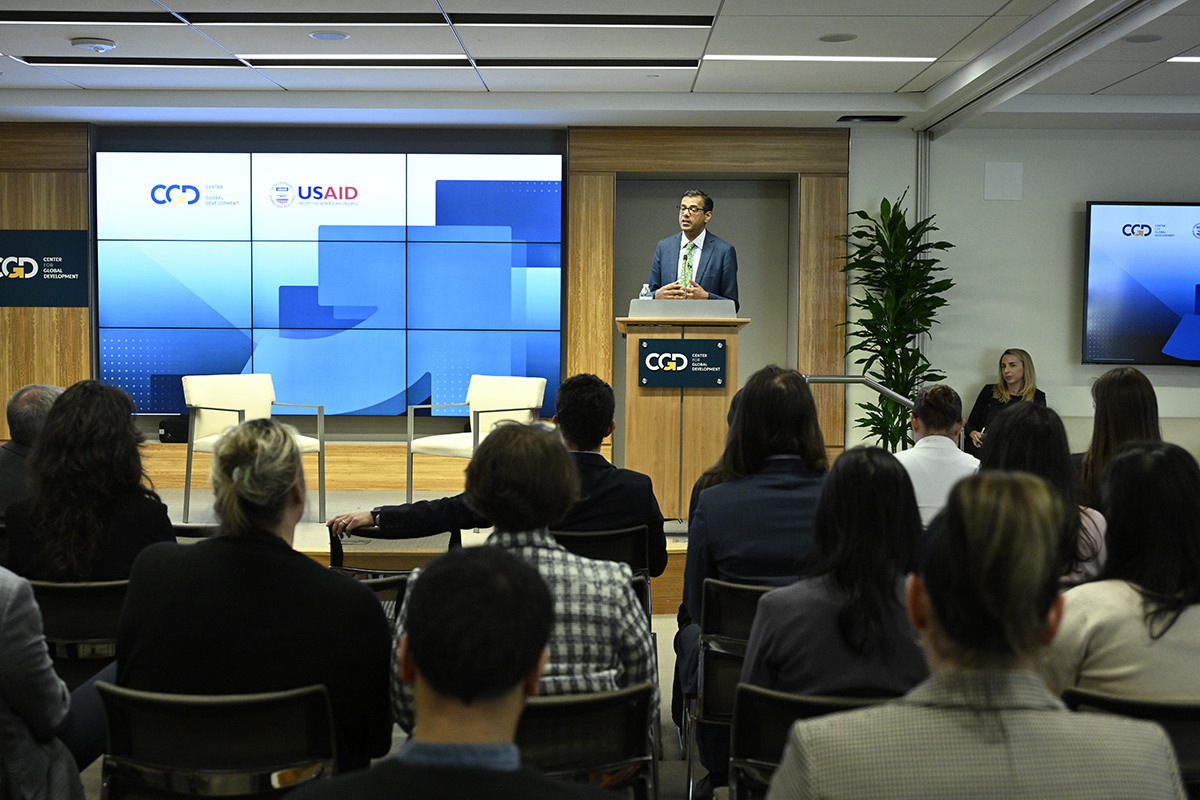The US Agency for International Development (USAID) is celebrating one of its signature initiatives, Feed the Future (FTF), this week. Building on the Bush administration’s efforts to increase aid for food security during the price spikes of 2007-08, the Obama administration created the FTF initiative to combat poverty and hunger through support for agricultural development in poor countries. In July, Congress gave the effort a bipartisan stamp of approval and ensured its continuity, when it passed the Global Food Security Act and authorized $1 billion for the program annually over the next two years.
The administration and Congress deserve kudos for making rural poverty and food security priorities in US development policy. Five years in, however, we still don’t know very much about how the program is working in the nineteen focus countries where it operates. Earlier this year, Casey Dunning, Janeen Madan, and I assessed implementation of the initiative thus far. We concluded that USAID’s Bureau for Food Security had done a good job of selecting focus countries that met the initiative’s criteria of having high levels of need and offering opportunities for effective partnership. But we also had concerns about other elements of the initiative, including insufficient transparency on spending, weak reporting, and the lack of rigorous impact evaluations.
A new report from the Global Food Security Project at the Center for Strategic and International Studies (CSIS) takes a deep dive on FTF activities in Bangladesh, one of the largest recipients of FTF funds. The report reinforces some of the key questions on selection criteria, program evaluation, and reporting transparency that also emerged from our research. In particular:
-
Selecting Bangladesh as a focus country makes sense, but what should the criteria for selecting zones of influence (sub-regions where FTF targets programs) within countries be? In the case of Bangladesh, does it really make sense to promote agriculture in a part of the country vulnerable to inundation from climate change?
-
Despite the rhetorical commitment to learning, where is the rigorous evaluation?
- Why is the reporting still so incomplete?
The zone of influence in Bangladesh is a southern coastal region that has relatively high levels of stunting and poverty, but it is also “the most vulnerable to climate change.” In choosing this area, FTF seems to have prioritized need over the odds of achieving sustainable results. Moreover, the report notes that a preexisting project promoting more effective fertilizer use in a northern region was shifted to the southern zone of influence when FTF launched. The project then had problems because the farmers there were less open to new technologies (p. 20).
Another heavily touted feature of the FTF initiative was the emphasis on learning. When my colleagues and I published our paper earlier this year, we expected that a raft of new impact evaluations would become available shortly after. Yet the CSIS report raises questions about FTF’s implementation of rigorous evaluations. It found that a project funded by the Global Agriculture and Food Security Program (GAFSP) was “one of few projects” in Bangladesh undergoing a rigorous impact evaluation. GAFSP received financing from the FTF budget, but it is operationally distinct and has its own monitoring and evaluation process.
Finally, the lack of more rigorous evaluations is compounded by the way that USAID continues to report “results.” Over the past few years, the initiative’s reports have moved beyond reporting performance indicators, such as how many people received training or loans, to also include data on how much poverty or stunting have declined in the zones of influence. While recognizing that rigorous evaluation takes time, we highlighted challenges with interpreting the preliminary impact data, including questionable attribution and lack of counterfactuals. For example, the information on impact is only useful if we know how it compares to previous trends, or to other parts of the country, where FTF is not implementing programs. In an earlier progress report, FTF claimed that reductions in stunting or poverty had accelerated in focus countries with available data. But in our CGD paper, we noted that the averages reported obscured important differences across individual countries.
Data included in the CSIS report on Bangladesh add to our concerns about how FTF is reporting results. Figures from recent household surveys across the country as a whole show slightly lower rates of reduction in stunting, compared to what FTF reports for the zone of influence, while national poverty rates actually dropped faster. This does not prove that Feed the Future is not having any positive and important effects, but not reporting this kind of information impedes having an honest conversation about the initiative’s performance.
|
|
|
|
|
|
|
|
|
|
|
|
|
|
|
|
|
|
|
|
|
|
|
|
|
|
|
|
|
|
|
|
|
|
|
At the time Casey, Janeen, and I completed our assessment, USAID was just beginning to release more information about the FTF’s impacts, and we focused primarily on asking whether the initiative was genuinely a new, more effective approach to global food security. Our conclusions were mixed and we felt like we had more questions than answers. Many months after FTF was supposed to start reporting real impact data, I still feel that way.
Disclaimer
CGD blog posts reflect the views of the authors, drawing on prior research and experience in their areas of expertise. CGD is a nonpartisan, independent organization and does not take institutional positions.





